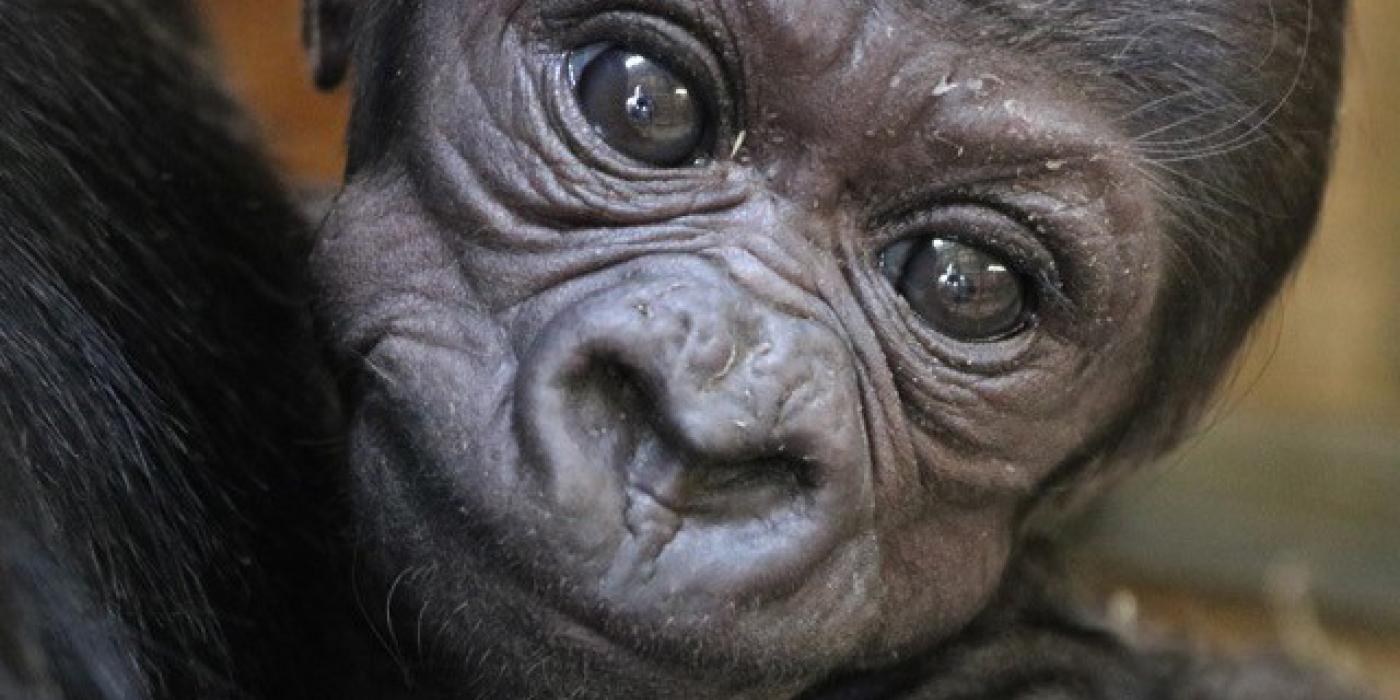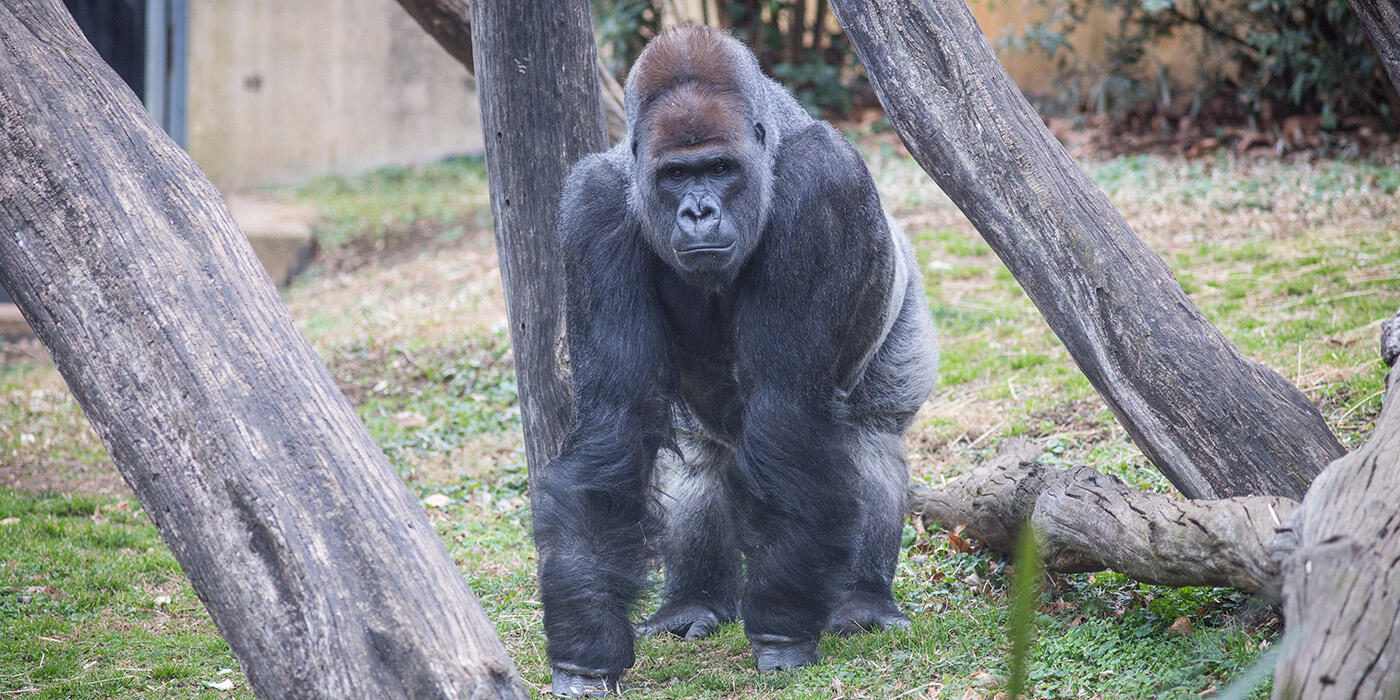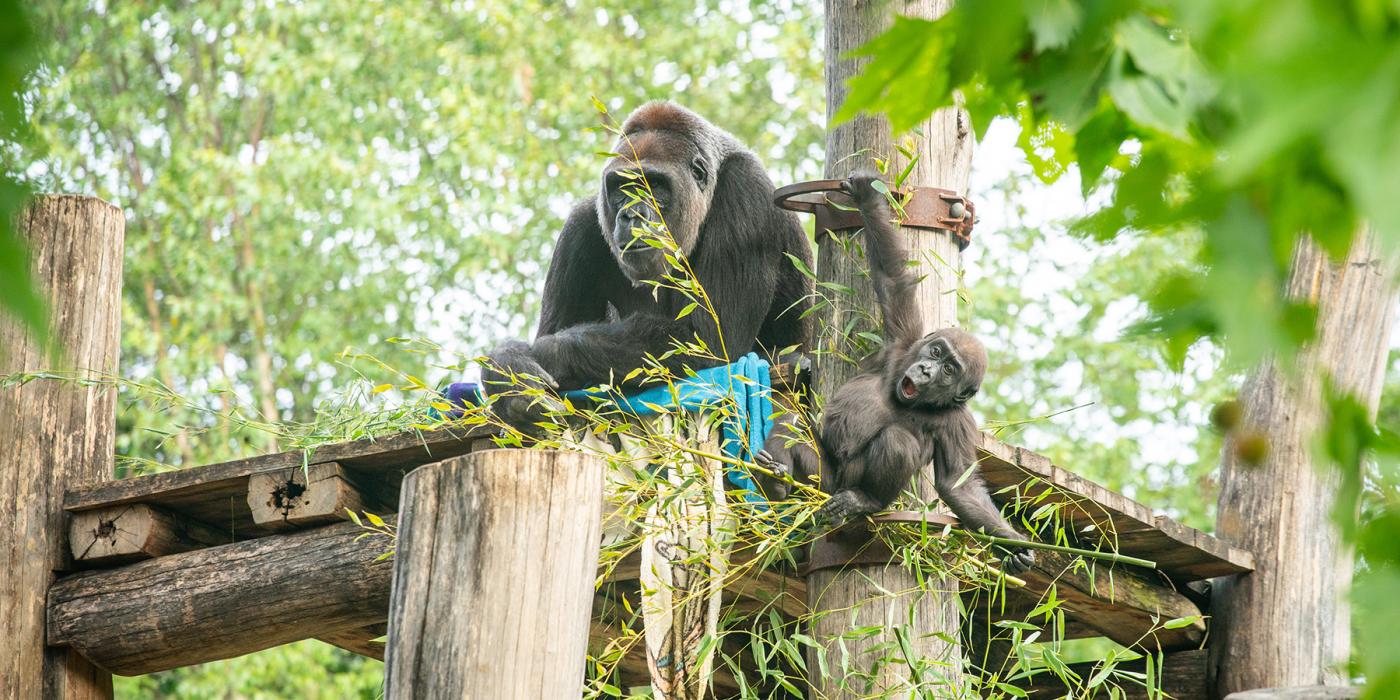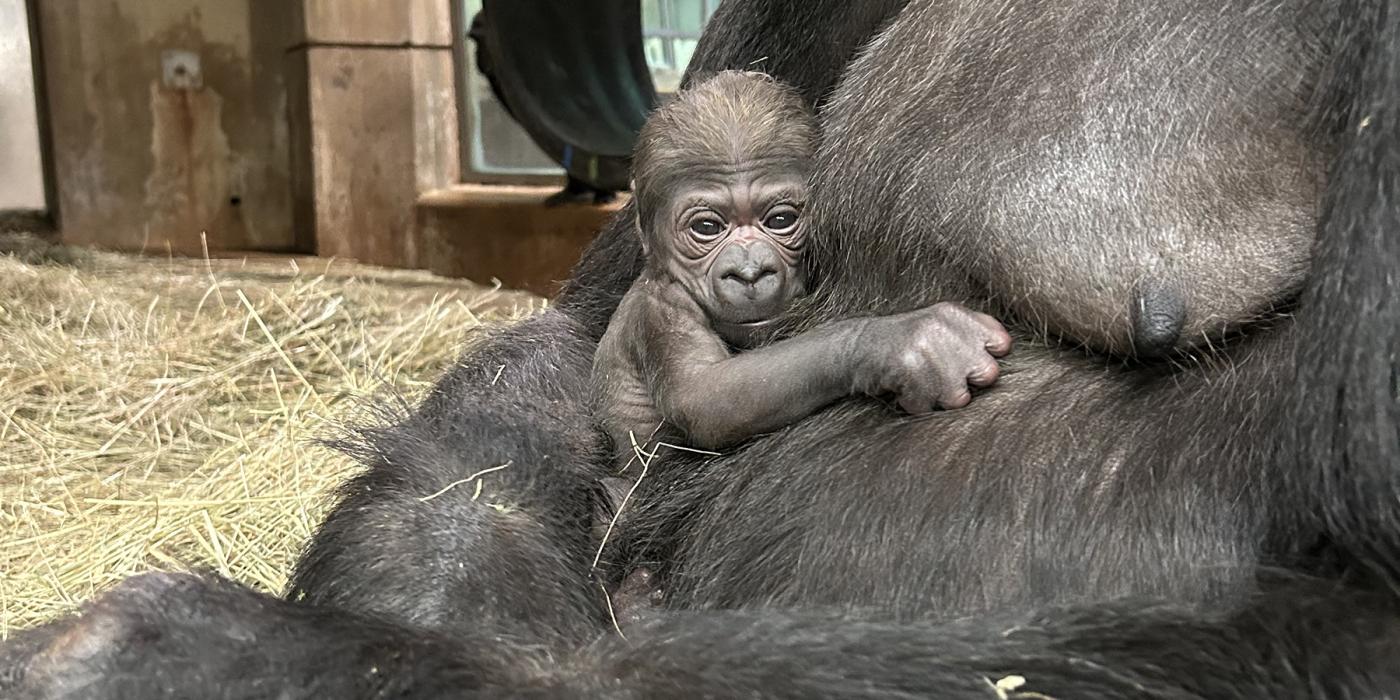#GorillaStory: A Growing Gorilla
At almost 3 weeks old, western lowland gorilla infant Moke is growing quickly and starting to take in his surroundings. Observation is an important part of a gorilla’s learning process, and the primate team says that Moke seems especially attentive, even at such a young age.
“Moke already looks bigger,” says Great Ape keeper Melba Brown. “He has more hair, his eyes are bright and he is very alert. Although he still naps, he does not take them as frequently as he did a few weeks ago.” Brown says that Moke spends most of his time looking at his mother, Calaya, and watching everything she does.
To encourage the gorillas to forage and explore their habitat, keepers offer the apes a variety of enrichment items throughout the day, including puzzle feeders, paper bags filled with alfalfa hay and vegetables, and other items that they can play with and investigate. Puzzle feeders are among Calaya’s favorite toys, and Brown notes that Moke watches his mom interact with these items.
“Calaya has a dominant personality, and when we spread out enrichment items in an enclosure, she will have a tendency to run over and take all of them! “ Brown said. “Moke is right in her lap watching her interact with these items. Occasionally, a piece of hay will fall from the enrichment item onto Moke, which startles him for a moment. But he just shakes it off. It’s fair to say the learning has begun!”
As mentioned in the previous #GorillaStory update, Brown and Calaya are once again picking up their training sessions. But, Calaya is encountering a bit of a learning curve in positioning Moke.
“Everything has changed now that Moke is here,” Brown says. “Before Moke, I could ask her to present parts on either side of her body. Now, when she is holding him, she only presents the body part that is on the free side. If she is cradling Moke in her left arm, and I ask to see her left shoulder, she will present her right shoulder. Down the road, we will work on asking her to shift Moke from one arm to the other so we can do a full evaluation of her body. She certainly knows and recognizes all of the behaviors I am asking for, but he needs to be a little more independent before she can reposition him. We are calling Moke by his name, and it is clear that Calaya understands that when we say the name Moke, we are speaking about her infant.”
Although Moke is the center of attention of his troop, his presence has not gone unnoticed by the Zoo’s silverback bachelor brothers, Kojo and Kwame. While the two troops remain separated, they can see, interact and vocalize to one another. Brown says that Calaya will often bring Moke over to Kojo and Kwame where they can sit beside each other, separated by a mesh barrier, and watch Moke.
“There have been changes in Kojo and Kwame’s behavior since Moke was born,” says Brown. “They seem more relaxed, and we have seen an increase in playful behavior between the two of them.”
For the best chance to see Calaya and Moke, Brown recommends that visitors arrive at the Great Ape House when it opens at 9 a.m. to watch the gorillas’ morning feeding and in the early afternoon during the time the gorillas’ training sessions often take place.
Follow the Zoo’s updates on Moke and the western lowland gorilla troop on Facebook, Twitter and Instagram with the hashtag #GorillaStory.Related Species:



